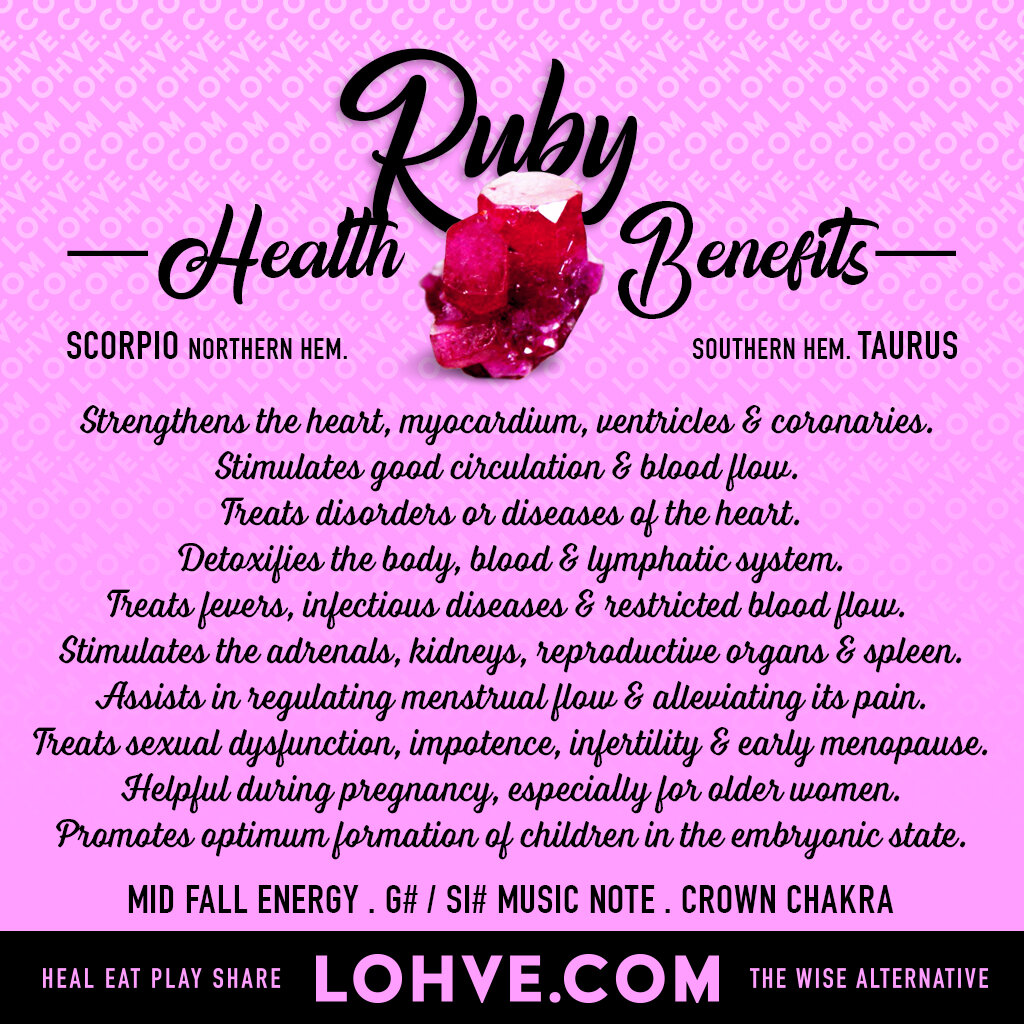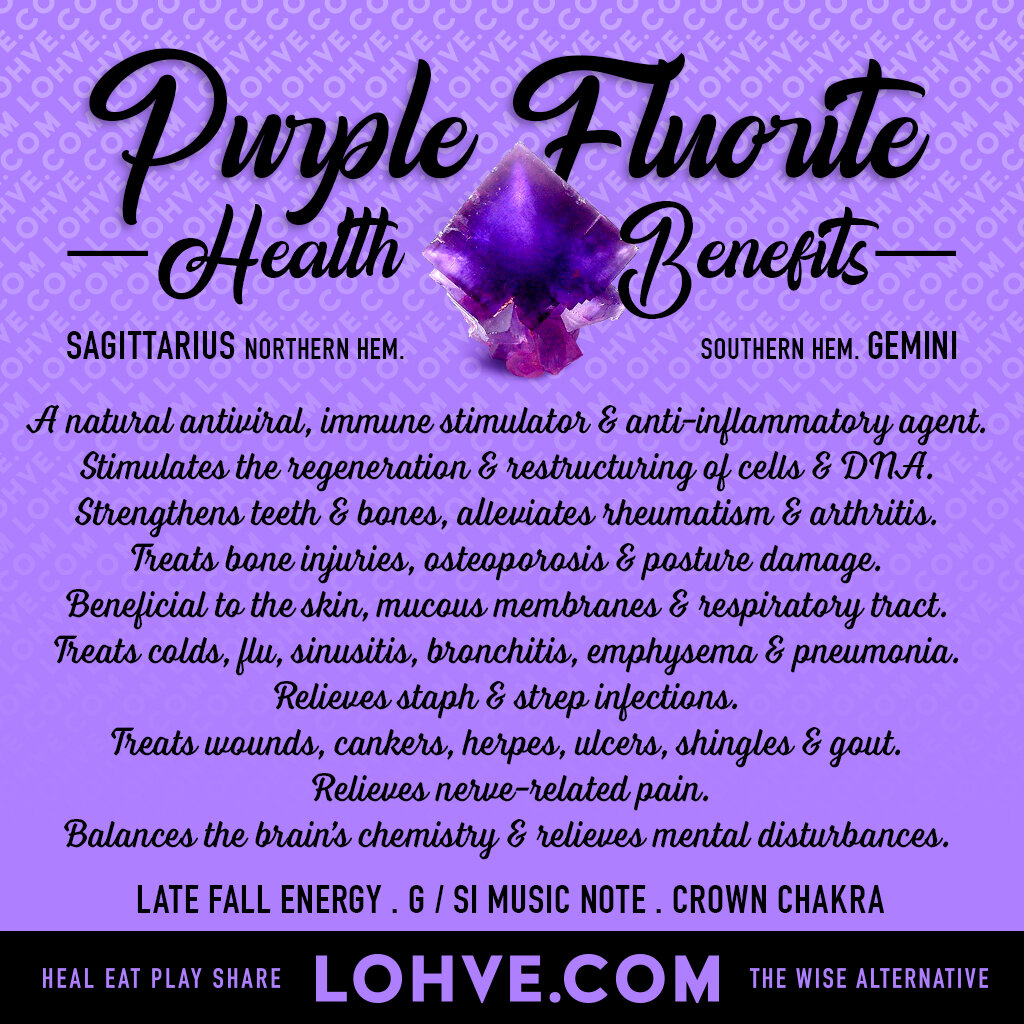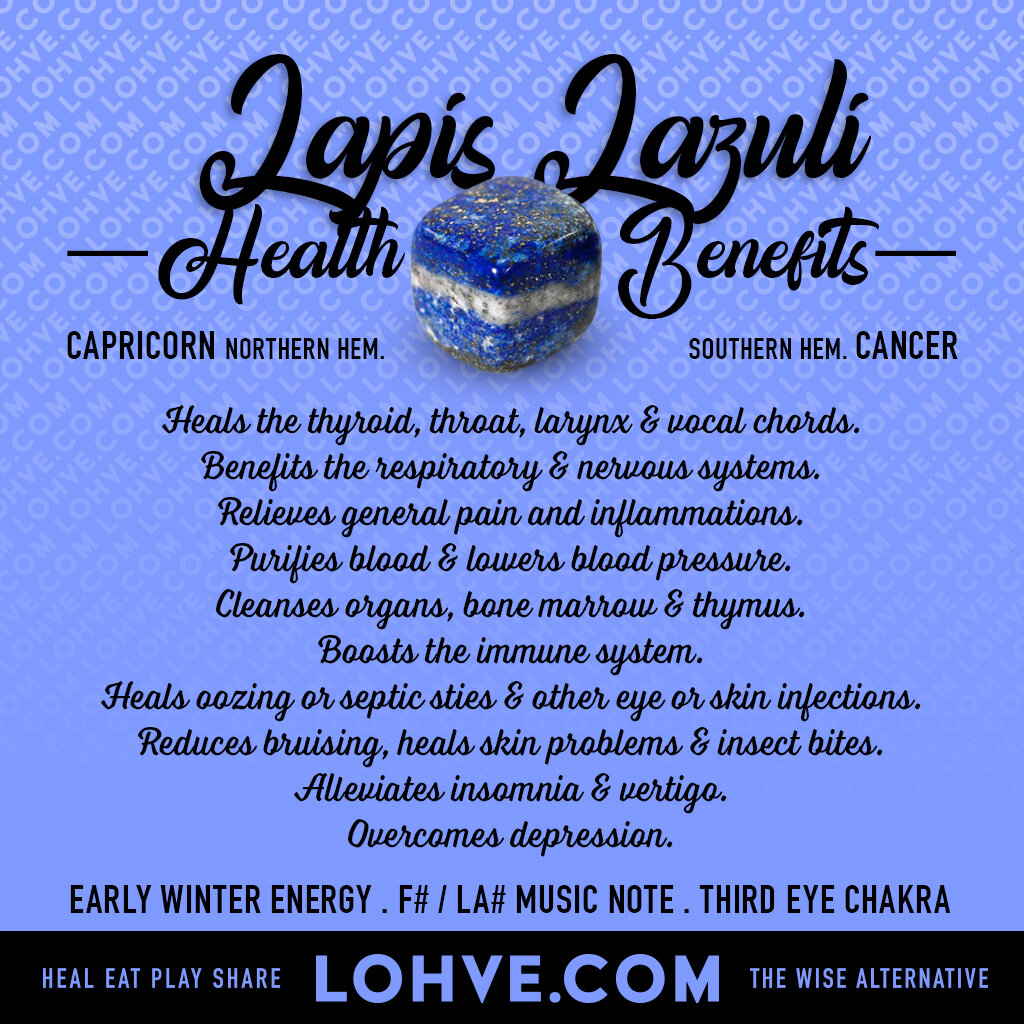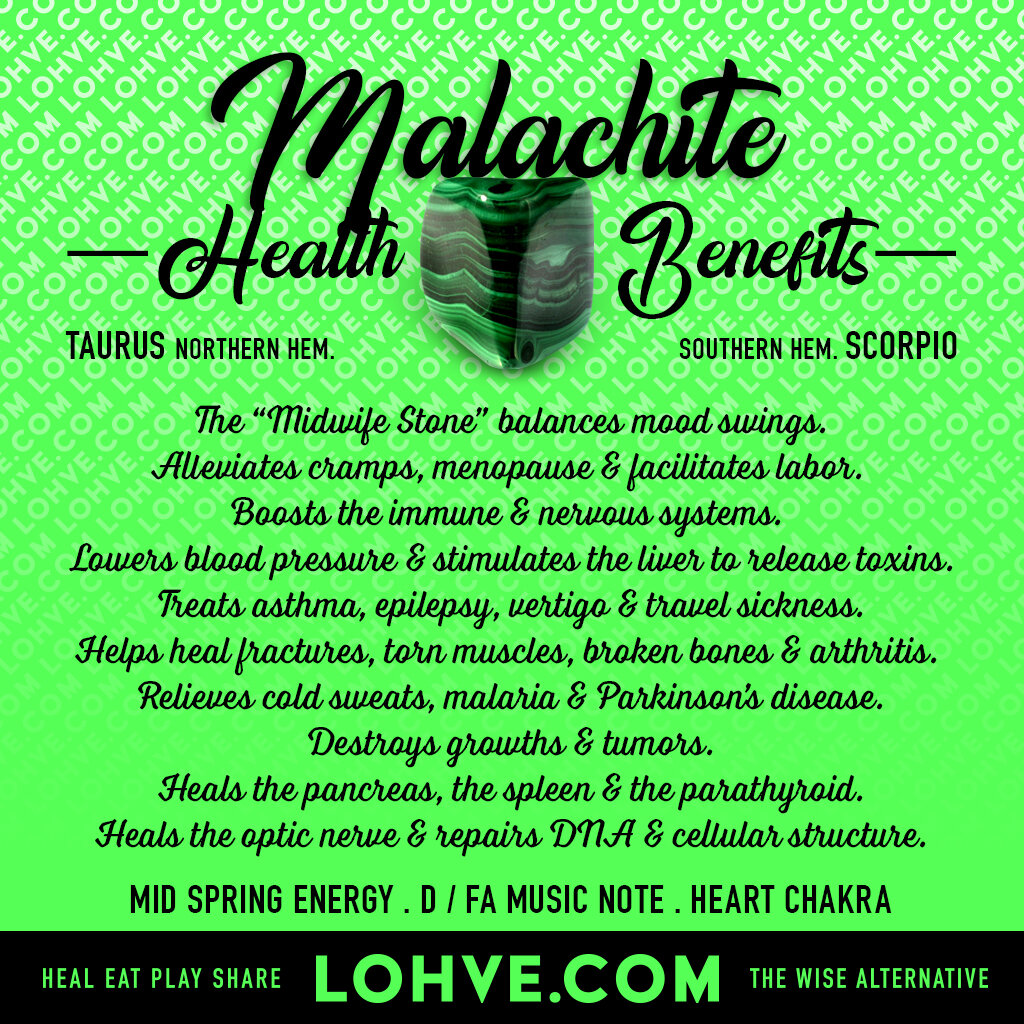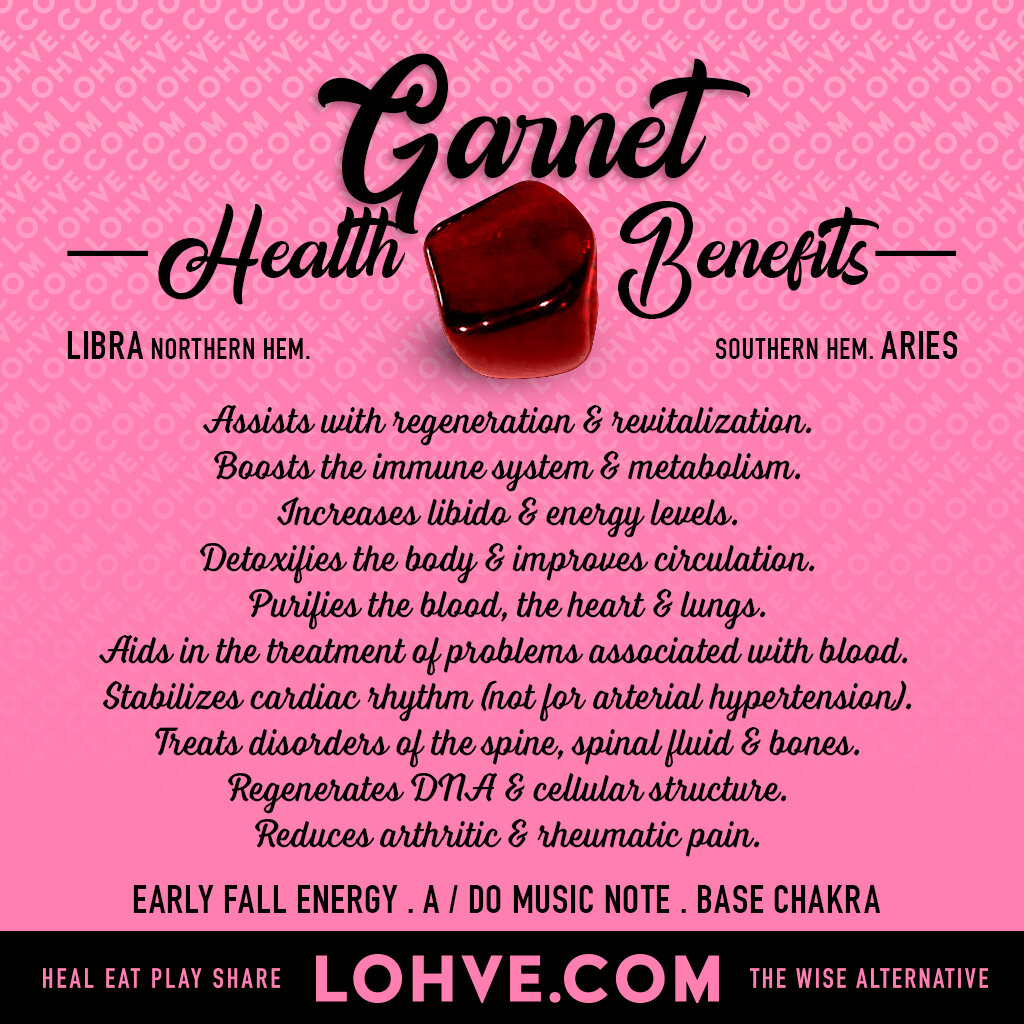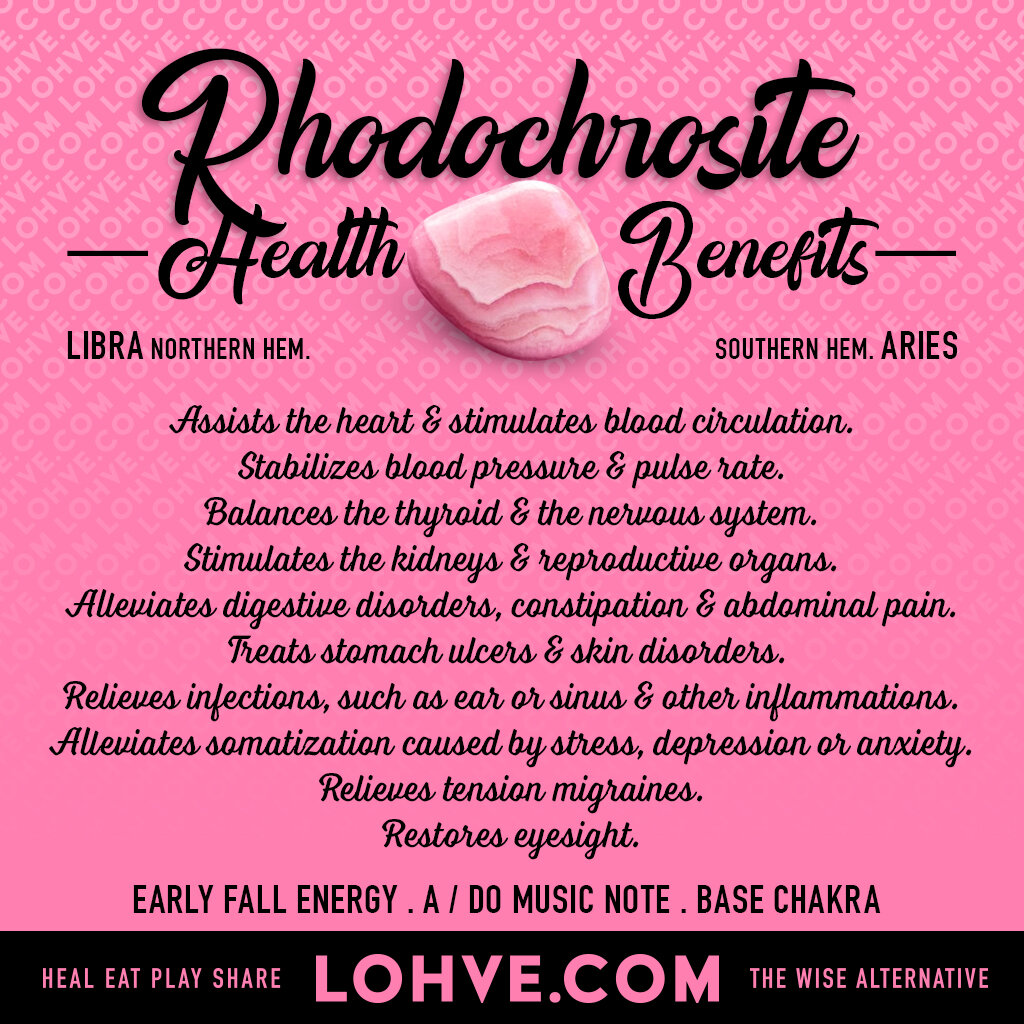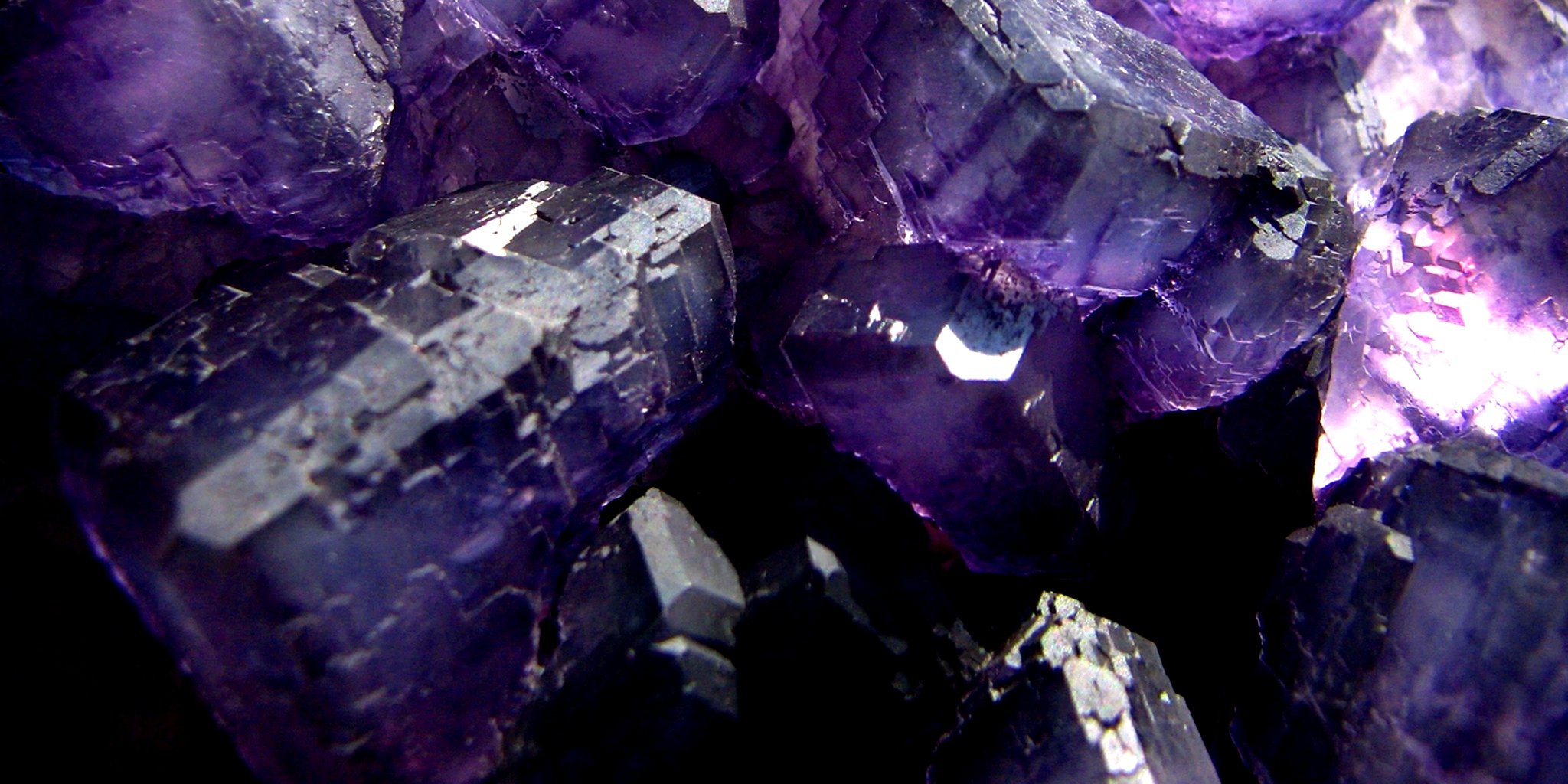
PURPLE FLUORITE
CORRESPONDENCES . HISTORY . COMPOSITION . HARDNESS . HEALTH BENEFITS . COLLECTIBLE CARD . SHOP
CORRESPONDENCES
LATE FALL
Energy
SAGITTARIUS
Northern Hemisphere
GEMINI
Southern Hemisphere
G / SI
Music Note
VIOLET
Color
CROWN
Chakra
Pure fluorite is transparent, both in visible and ultraviolet light, but impurities usually make it a colorful mineral and has consequently been dubbed "the most colorful mineral in the world". Every color of the rainbow in various shades are represented by fluorite samples, along with white, black, and clear crystals. The most common colors are purple, blue, green, yellow, or colorless. Less common are pink, red, white, brown and black. Color zoning or banding is commonly present.
HISTORY
The word fluorite is derived from the Latin verb fluere, meaning to flow. The mineral is used as a flux in iron smelting to decrease the viscosity of slags. The term flux comes from the Latin adjective fluxus, meaning flowing, loose, slack. The mineral fluorite was originally termed fluorospar and was first discussed in print in a 1530 work Bermannvs sive de re metallica dialogus [Bermannus; or a dialogue about the nature of metals], by Georgius Agricola, as a mineral noted for its usefulness as a flux. Agricola, a German scientist with expertise in philology, mining, and metallurgy, named fluorspar as a neo-Latinization of the German Flussspat from Fluß (stream, river) and Spat (meaning a nonmetallic mineral akin to gypsum, spærstān, spear stone, referring to its crystalline projections).
In 1852, fluorite gave its name to the phenomenon of fluorescence, which is prominent in fluorites from certain locations, due to certain impurities in the crystal. Fluorite also gave the name to its constitutive element fluorine. Currently, the word "fluorspar" is most commonly used for fluorite as the industrial and chemical commodity, while "fluorite" is used mineralogically and in most other senses.
In the context of archeology, gemmology, classical studies, and egyptology, the Latin terms murrina and myrrhina refer to fluorite. In book 37 of his Naturalis Historia, Pliny the Elder describes it as a precious stone with purple and white mottling, whose objects carved from it, the Romans prized.
COMPOSITION
Fluorite crystallizes in a cubic motif. Crystal twinning is common and adds complexity to the observed crystal habits. Fluorite has four perfect cleavage planes that help produce octahedral fragments. The structural motif adopted by fluorite is so common that the motif is called the fluorite structure. Element substitution for the calcium cation often includes certain rare earth elements (REE), such as yttrium and cerium. Iron, sodium, and barium are also common impurities. Some fluoride anions may be replaced by the chloride anion.
HARDNESS
Mohs Scale Hardness: 4
The Mohs scale of mineral hardness is a qualitative ordinal scale characterizing scratch resistance of various minerals through the ability of harder material to scratch softer material.
The Health Benefits of
Purple Fluorite
A natural antiviral, immune stimulator & anti-inflammatory agent.
Stimulates the regeneration & restructuring of cells & DNA.
Strengthens teeth & bones, alleviates rheumatism & arthritis.
Treats bone injuries, osteoporosis & posture damage.
Beneficial to the skin, mucous membranes & respiratory tract.
Treats colds, flu, sinusitis, bronchitis, emphysema & pneumonia.
Relieves staph & strep infections.
Treats wounds, cankers, herpes, ulcers, shingles & gout.
Relieves nerve-related pain.
Balances the brain’s chemistry & relieves mental disturbances.
Fluorite encourages and sustains the flawless ideal of health, intellect and emotional well-being by purifying, restructuring, or eliminating anything within the physical or subtle bodies that is not in perfect order. It may be used to dispel disorders at the beginning of symptoms, and is regarded as a natural antiviral, immune stimulator, and anti-inflammatory agent. [Melody, 277][Hall En, 177][101 Hall, 90]
It is highly beneficial to the skin, mucous membranes and respiratory tract, and may be utilized to dissipate symptoms of colds and flu, sinusitis, bronchitis, dry cough, emphysema and pneumonia, as well as staph and strep infections, canker sores and herpes, ulcers, shingles and nerve-related pain. Fluorite may also be used in treatments of violent or highly infectious disease, as well as a protective preventative for those who work with infected patients. [Melody, 277-278][Hall En, 177][Gienger, 39-40]
Fluorite is particularly strengthening for the teeth and bones, and assists in ameliorating osteoporosis, posture damage and deformities. It helps reduce pain, swelling and inflammation associated with arthritis, rheumatism, gout, and bone-related injury, and can be used to restore mobility and relieve spasms. [Fernie, 147][Ahsian, 160][Hall En, 177][101 Hall, 90][Gienger, 39-40]
Fluorite is an exceptional crystal for relieving mental illness and disturbances of brain wave frequencies by increasing the electrical charge of brain cells and balancing the brain’s chemistry. It assists in issues of dizziness and vertigo, as well as balance and coordination. If worn day and night for several months, Fluorite can also assist in healing distortions in personality, intelligence and character that are often linked and prohibit one from leading a full life. [Raphaell, 107][Ahsian 160][Megemont, 84-85][Margherita, 498-499][Hall 129]
Save Your Card!
Seize The Benefits Of Gemstones
For ages, stones have been worn around the neck and on the body in order to promote optimal physical, psychical and emotional health.
























